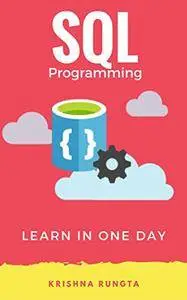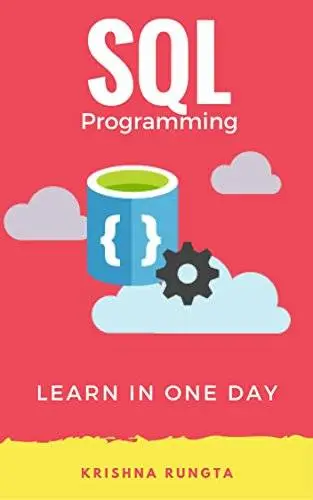Learn SQL in 1 Day: Definitive Guide to Learn SQL for Beginners by Krishna Rungta
English | 19 Mar. 2017 | ASIN: B06XRJ59QN | 182 Pages | AZW3 | 2.54 MB
English | 19 Mar. 2017 | ASIN: B06XRJ59QN | 182 Pages | AZW3 | 2.54 MB
Databases can be found in almost all software applications. Infact it's hard to find a software that doesn’t use a database. SQL is the standard language to query a database. SQL stand for: Structured Query Language. SQL provides basic to advance commands to retrieve, update, delete, insert data into database.
This book is designed for beginners with little or no prior database experience.
Chapter 1: Introduction to Database and MySQL
What is Data?
What is a database?
What is a Database Management System?
Types of DBMS
What is SQL?
What is NoSQL?
Chapter 2: Install MySQL workbench
What is MySQL?
Why use MySQL?
Introducing MySQL Workbench
MySQL workbench- Modeling and Design tool
MySQL workbench - SQL development tool
Install MySQL workbench Guide
Chapter 3: Introduction To Database Design
Why Database Design is Important?
Database development life cycle
Requirements analysis
Database designing
Implementation
Types of Database Techniques
Chapter 4: Database Normalization
What is Normalization?
1NF Rules
What is Composite Key
2NF Rules
3NF Rules
Boyce-Codd Normal Form (BCNF)
Chapter 5: ER Modeling
What is ER Modeling?
Enhanced Entity Relationship (EER) Model
Why use ER Model?
Entities in the "MyFlix" library
Defining the relationships among entities
Chapter 6: How To Create A Database
Create Database
Creating Tables MySQL
Data types
MySQL workbench ER diagram forward Engineering
Chapter 7: How to use SELECT in MySQL
Chapter 8: Where clause in MySQL
Chapter 9: How to use INSERT Into in MySQL
Chapter 10: How to Delete & Update data in MySQL
Chapter 11: ORDER BY, DESC and ASC
Chapter 12: Group By
Chapter 13: Wildcards
Chapter 14: Regular Expressions
Chapter 15: MySQL PHP
Chapter 16: Aggregate Function in MySQL
Chapter 17: Null value & Keyword in MySQL
Chapter 18: Auto Increment
Chapter 19: Alter, Drop & Rename
Chapter 20: Limit keyword
Chapter 21: Sub-Queries
Chapter 22: Joins
Chapter 23: Unions
Chapter 24: Views
Chapter 25: Index in MySQL
What is Data?
What is a database?
What is a Database Management System?
Types of DBMS
What is SQL?
What is NoSQL?
Chapter 2: Install MySQL workbench
What is MySQL?
Why use MySQL?
Introducing MySQL Workbench
MySQL workbench- Modeling and Design tool
MySQL workbench - SQL development tool
Install MySQL workbench Guide
Chapter 3: Introduction To Database Design
Why Database Design is Important?
Database development life cycle
Requirements analysis
Database designing
Implementation
Types of Database Techniques
Chapter 4: Database Normalization
What is Normalization?
1NF Rules
What is Composite Key
2NF Rules
3NF Rules
Boyce-Codd Normal Form (BCNF)
Chapter 5: ER Modeling
What is ER Modeling?
Enhanced Entity Relationship (EER) Model
Why use ER Model?
Entities in the "MyFlix" library
Defining the relationships among entities
Chapter 6: How To Create A Database
Create Database
Creating Tables MySQL
Data types
MySQL workbench ER diagram forward Engineering
Chapter 7: How to use SELECT in MySQL
Chapter 8: Where clause in MySQL
Chapter 9: How to use INSERT Into in MySQL
Chapter 10: How to Delete & Update data in MySQL
Chapter 11: ORDER BY, DESC and ASC
Chapter 12: Group By
Chapter 13: Wildcards
Chapter 14: Regular Expressions
Chapter 15: MySQL PHP
Chapter 16: Aggregate Function in MySQL
Chapter 17: Null value & Keyword in MySQL
Chapter 18: Auto Increment
Chapter 19: Alter, Drop & Rename
Chapter 20: Limit keyword
Chapter 21: Sub-Queries
Chapter 22: Joins
Chapter 23: Unions
Chapter 24: Views
Chapter 25: Index in MySQL



